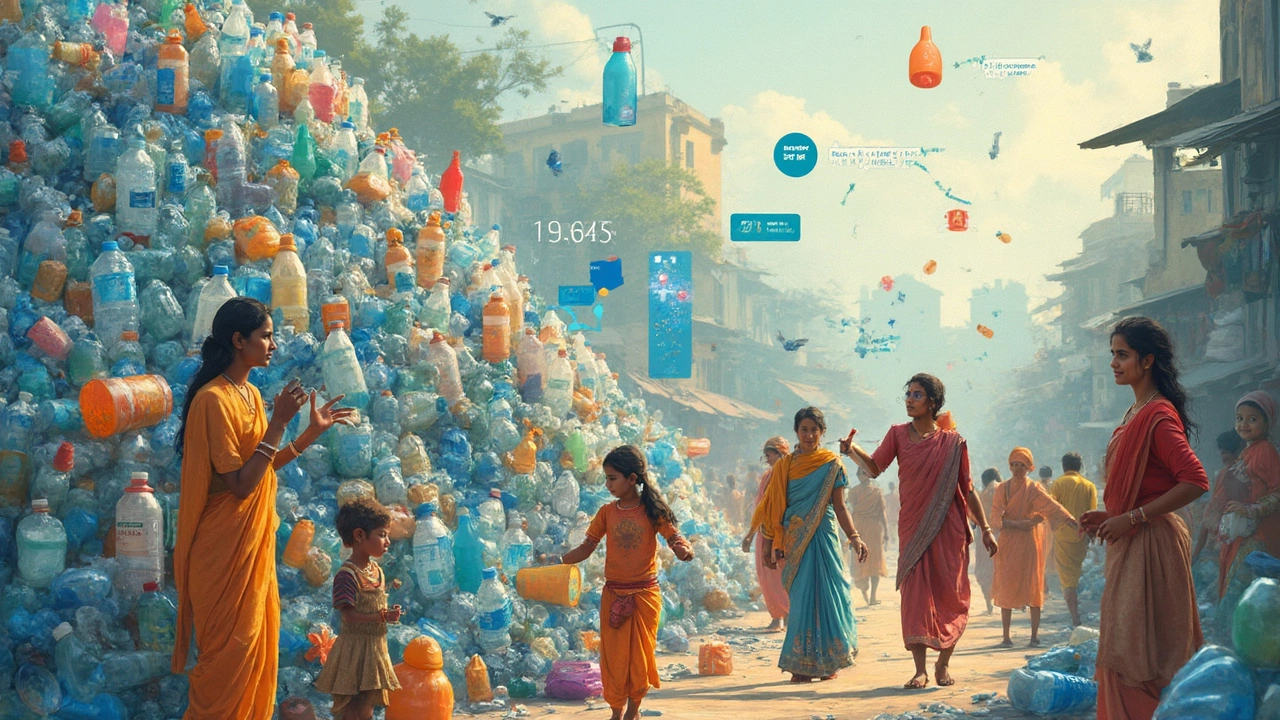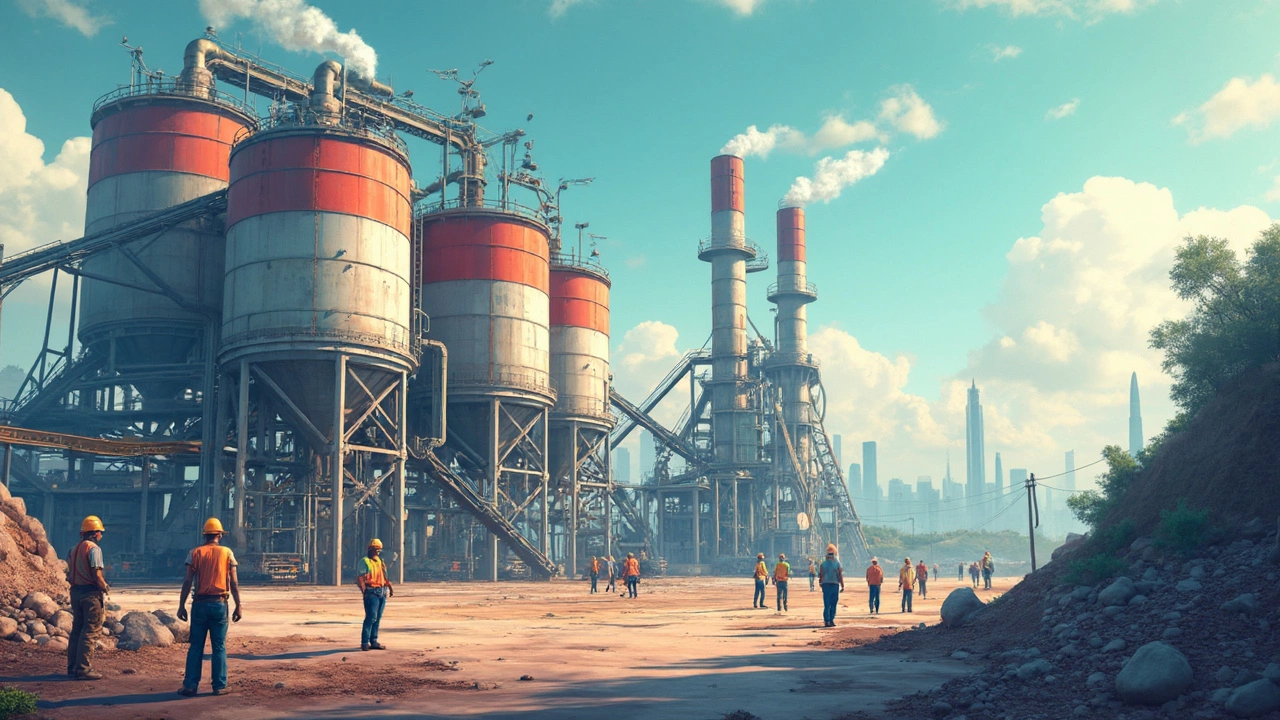If you ever wondered which company cranks out the most plastic on the planet, here’s the quick answer: China’s Sinopec sits at the top. It’s not a household name like Nike or Coca-Cola, but in plastic circles, they’re the heavyweights—churning out millions of tons every year. That plastic ends up everywhere, from the packaging in your pantry to the car parts under your hood.
Here’s something wild: Sinopec alone is responsible for more plastic production than some entire countries. The reason? They control the whole pipeline—from oil refining right down to those tiny resin pellets that get melted into all sorts of things. If you’re sourcing plastic, knowing the big players and what they offer can actually lower your costs or speed up your supply chain.
- The Global Kingpin of Plastic Production
- How Much Plastic Is Made and Where It Goes
- Breaking Down the Top Types of Plastics and Applications
- What the Numbers Mean for the Environment and Buyers
The Global Kingpin of Plastic Production
When it comes to largest plastic producer in the world, China’s Sinopec sits right at the top. Think about this: in 2024, Sinopec produced over 15 million metric tons of plastic resin, covering everything from polyethylene to polypropylene. That’s not just a big number—it’s bigger than the whole annual output of some smaller countries.
Why is Sinopec ahead? First, they control the whole value chain. They extract oil and gas, refine it, and then turn it into resins and direct products. Fewer middlemen means lower costs and faster delivery. If you’re in the plastics supply business, you’ve probably heard their name tossed around as a go-to source for big orders.
But Sinopec isn’t running the show alone. The top five also include Saudi Basic Industries Corporation (SABIC), Dow Inc. from the USA, LyondellBasell (headquartered in the Netherlands, but operating globally), and ExxonMobil Chemical. These companies make up the backbone of the world’s plastic manufacturing industry.
| Company | Country | Annual Plastic Output (Million Tons) |
|---|---|---|
| Sinopec | China | 15+ |
| SABIC | Saudi Arabia | 13 |
| Dow Inc. | USA | 12 |
| LyondellBasell | Netherlands/Global | 10 |
| ExxonMobil Chemical | USA | 9 |
China isn’t just big on the supply side. The country is also the world’s biggest consumer of plastics, gobbling up whatever its local giants and global partners can churn out. If you’re looking at the market for global plastics, it pays to watch what happens in China—and especially what Sinopec does next.
If you need to source large amounts of plastic, connecting with these industry leaders usually means better pricing and reliability. They also have the resources to innovate, so you’ll often find new types of resins or eco-friendly options popping up first among their product lines. Watching the moves of these big boys gives you a shortcut to upcoming trends and steady supply.
How Much Plastic Is Made and Where It Goes
The numbers here are wild. In 2023, the world produced more than 400 million tons of plastic, according to Statista. No surprise—China led that race by a mile, making almost a third of all plastic globally. Largest plastic producer really means what it says: just a handful of companies make a huge chunk of what we use every day.
But where does all that plastic end up? Here’s the breakdown:
- Around 40% goes into packaging—think food wrap, bottles, and Amazon boxes wrapped in another layer.
- About 20% stays in construction. Pipes, insulation, window frames—you name it.
- Roughly 10% heads to the auto industry for interior parts, dashboards, and even some car body panels.
- The rest is split between electronics, household goods, clothing, and that odd plastic single-use gadget you forgot you owned.
Getting a better look at it, here’s a quick plastic production snapshot by end use:
| End Use | Share (%) |
|---|---|
| Packaging | 40 |
| Construction | 20 |
| Automotive | 10 |
| Electronics | 8 |
| Others | 22 |
One thing to keep in mind: less than 10% of all that plastic gets recycled. Most of it goes to landfills or just sticks around in the environment. If you’re running a business or even looking for different types of plastic manufacturing partners, knowing these numbers can actually help you choose smarter suppliers—maybe even the ones improving their recycling or reducing waste.

Breaking Down the Top Types of Plastics and Applications
Not all plastics are the same—far from it. There are a handful of top plastic types powering everything from your soda bottle to the dashboard in your car. Each plastic type has its own perks, and knowing which is which helps whether you’re buying, recycling, or just curious about that recycling logo on your water jug.
Here are the big players in the global plastics market:
- Polyethylene (PE): The absolute workhorse. You’ll spot it in shopping bags, milk jugs, shampoo bottles, even kids’ toys. High-density polyethylene (HDPE) is thick and tough, while low-density (LDPE) is the bendy stuff in plastic wraps.
- Polypropylene (PP): Big in food tubs, bottle caps, straws, and car parts. It holds up well to heat, which is why Tupperware usually uses this type.
- Polyvinyl Chloride (PVC): The king of pipes and construction. PVC is rigid and cheap but can be tweaked to make stuff like faux leather. Those credit cards in your wallet? PVC.
- Polystyrene (PS): Think foam cups, fast-food clamshells, and packing peanuts. It’s light and easy to mold, but not the best for the environment if it gets tossed out.
- Polyethylene Terephthalate (PET): This one pops up in drink bottles and food packaging. PET recycles easily and is often turned back into bottles or fibers for clothing.
Numbers time. Here’s a quick snapshot of recent plastic production stats worldwide (2023):
| Plastic Type | Global Production (million tons) | Main Uses |
|---|---|---|
| Polyethylene | 110 | Bags, bottles, films, toys |
| Polypropylene | 75 | Food containers, car parts |
| PVC | 50 | Pipes, flooring, credit cards |
| Polystyrene | 20 | Cups, packaging, insulation |
| PET | 30 | Bottles, packaging, clothing fibers |
If you’re in the market for plastics—whether it’s for making packaging, car interiors, or even medical gear—matching the right material to your product is key. Some plastics handle heat better; some are stronger or lighter. When shopping around in the plastic manufacturing scene, knowing these differences saves cash and headaches later on.
What the Numbers Mean for the Environment and Buyers
When you see figures like 70 million tons of plastic a year just from one big player, it’s not just a stat—it’s a signal. That kind of output seriously shapes both the environment and the plastic manufacturing market. Let’s break down what’s really going on behind those numbers.
First up, the environmental side. Only about 9% of all plastic produced worldwide actually gets recycled. The rest? It usually ends up in landfills, incinerators, or our oceans. Companies like Sinopec, Reliance, and ExxonMobil produce so much plastic that environmental cleanup can barely keep pace. Here’s a quick peek at global plastic fate:
| Plastic Disposition | Global Percent |
|---|---|
| Landfilled | ~60% |
| Recycled | ~9% |
| Incinerated | ~19% |
| Other/Mismanaged | ~12% |
That’s why everyday products—from bottles to packaging—keep piling up. If you're buying or selling in bulk, how your supplier handles waste and recycling matters now more than ever. Retailers and brands get criticized if their products don't use recycled or recyclable plastics. Some buyers now demand proof of eco-friendly sourcing, putting pressure on the industry to step up its game.
Here are a few quick tips if you care about staying on the right side of both buyers and the environment:
- Check if your supplier offers post-consumer or recycled plastic manufacturing.
- Ask for details about the plastic type. Some (like PET and HDPE) are easier to recycle than others.
- Look for certifications—things like ISCC (International Sustainability and Carbon Certification) signal better environmental standards.
- Stay updated with local regulations; some countries now restrict imports of single-use or non-recyclable plastics.
The numbers don’t just show a giant market—they also reveal urgent problems and new opportunities for smarter sourcing decisions. Anyone serious about plastics needs to keep an eye on both the supply and the consequences.
